Have you ever wondered how to copy the natural nutrient cycle for your bonsai, which usually happens in nature with decomposing leaves? The right fertilizer can make all the difference, especially since bonsai grow in limited soil and need regular nutrient replenishment.
This guide dives into the top fertilizers that cater specifically to bonsai needs. I’ll cover organic and synthetic options, from slow-release granules to quick-acting liquids, ensuring your bonsai gets the perfect balance of nitrogen, phosphorus, and potassium. Whether you’re nurturing a delicate flowering bonsai or a robust conifer, I’ve got the ideal feeding solution for you.
Ready to see your bonsai flourish like never before? Let’s explore how the right fertilizer can boost your bonsai’s health and beauty, making your gardening experience even more rewarding.
- Related article: How Do You Grow Bonsai Trees?
5 Key Takeaways on the Best Bonsai Fertilizer
- Bonsai trees are crafted through the art of pruning and training saplings to create small, full-grown tree replicas.
- Dyna-Gro Liquid Grow & Liquid Bloom are excellent for tropical bonsai, providing quick nutrient uptake and supporting growth and flowering.
- Osmocote Plus Smart-Release Plant Food provides a steady nutrient supply for outdoor bonsai with its controlled-release technology.
- Liquid fertilizers, such as Miracle-Gro Water Soluble All Purpose, deliver nutrients quickly but require more frequent applications.
- Overfeeding bonsai can lead to problems like leaf yellowing and stunted growth, necessitating immediate corrective measures and reduced future fertilizer use.
6 Best Fertilizers for Bonsai Trees
To keep your bonsai trees strong and healthy, they need top-notch food. I’ve found the seven best fertilizers that are perfect for bonsai trees.
1. Biogold Original Bonsai Fertilizer
Biogold Original Bonsai Fertilizer is excellent for a wide range of bonsai species, including Japanese maples, pines, and junipers.
- Read more about Juniper Bonsai Care
It provides a balanced nutrient profile that promotes overall health and steady growth without excessive foliage production. This organic fertilizer contains a 5-5-5 NPK ratio along with beneficial microorganisms.
The slow-release formula feeds trees gradually over 1-2 months. However, it can be more expensive than some synthetic options, and the pellets may attract pests if not properly covered.
2. Dyna-Gro Liquid Grow & Liquid Bloom
Dyna-Gro Liquid Grow & Liquid Bloom is ideal for tropical and subtropical bonsai like ficus, jade, and Chinese elm. Its liquid form allows for quick nutrient uptake, promoting vigorous growth and abundant flowering/fruiting.
The Grow formula (7-9-5) encourages vegetative growth, while Bloom (3-12-6) improves flower production. These concentrated liquids contain all essential macro and micronutrients.
Be cautious not to over-apply, as this can lead to fertilizer burn. Dilute properly and adjust frequency based on your tree’s needs.
3. Osmocote Plus Smart-Release Plant Food
Osmocote Plus Smart-Release Plant Food works well for outdoor deciduous and coniferous bonsai like beech, larch, and spruce. Its controlled-release technology provides a steady nutrient supply for up to 6 months, reducing the need for frequent applications.
It contains a 15-9-12 NPK ratio plus 11 essential nutrients. The coated granules prevent nutrient leaching, but they can be visually unappealing on the soil surface. Avoid using in very small pots where nutrient buildup could occur.
4. Miracle-Gro Water Soluble All Purpose Plant Food
Miracle-Gro Water Soluble All Purpose Plant Food is suitable for most bonsai types, especially during active growth periods. Its high nitrogen content (24-8-16) promotes lush foliage development in species like elm, maple, and boxwood.
This water-soluble fertilizer is easy to apply and quickly absorbed by roots. It also contains magnesium and other micronutrients. However, it requires more frequent applications than slow-release options. Be careful not to overfeed, as this can lead to excessive growth and weak branch structure.
5. Dr. Earth Organic Bonsai Fertilizer
Dr. Earth Organic Bonsai Fertilizer is excellent for organic enthusiasts and works well with most bonsai species. Its balanced 5-5-5 NPK ratio promotes steady, healthy growth without forcing.
This fertilizer contains beneficial soil microbes and mycorrhizae, improving nutrient uptake and soil structure. It’s composed of fish bone meal, alfalfa meal, and other organic ingredients. While it’s environmentally friendly, it may have a strong odor initially.
Also, the organic nature means nutrient release can be slower, especially in cooler temperatures.
6. Espoma Organic Plant-Tone Organic Fertilizer
Espoma Organic Fertilzier is well-suited for a variety of bonsai, particularly conifers like juniper and pine. Its 5-3-3 NPK ratio with added iron promotes green foliage and strong root development.
This water-soluble fertilizer dissolves easily and can be applied as a foliar spray or soil drench. It also contains a range of micronutrients tailored for bonsai needs.
Be cautious when using it on newly repotted trees or those with delicate root systems, as it can be strong if not properly diluted. Adjust application rates based on your tree’s growth stage and health.
What Are Bonsai Fertilizers For?
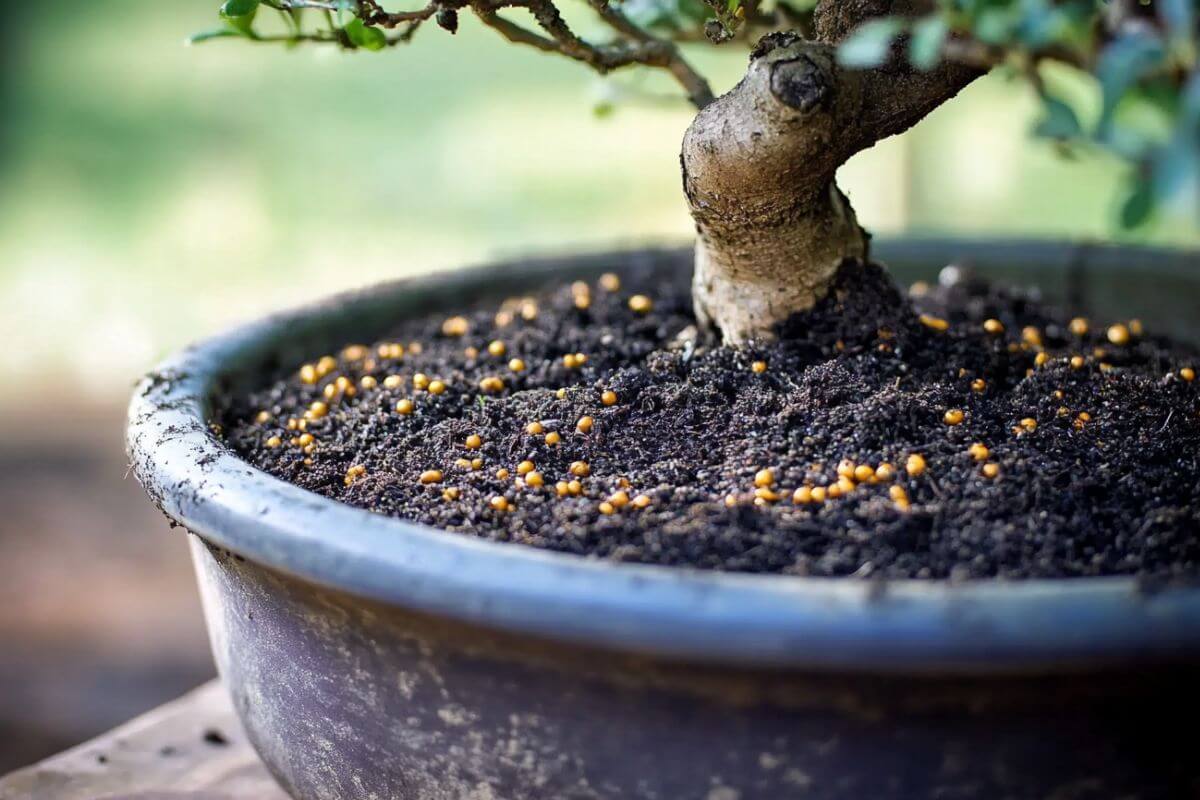
To keep your bonsai trees healthy, it’s important to add essential nutrients or trace elements to the soil, especially since they grow in shallow pots and lose nutrients quickly. In nature, plants get nutrients from decomposing leaves, but indoor bonsai need fertilizers to replace these nutrients.
When choosing a fertilizer, look for the “NPK” ratio. This shows the amounts of nitrogen (N), phosphorus (P), and potassium (K). Here’s the role of each compound:
- Nitrogen – Helps with leaf growth and overall development.
- Phosphorus – Good for strong roots and helps with photosynthesis.
- Potassium – Supports overall health and helps the tree recover after pruning.
A balanced fertilizer with an NPK ratio, such as 30-10-10, works well for most bonsai trees. This means the fertilizer has 30 parts nitrogen, 10 parts phosphorus, and 10 parts potassium.
When choosing bonsai fertilizers, you can opt for organic or synthetic options. Organic fertilizers are made from plant or animal-based ingredients, like fish, manure, or seaweed.
They usually have lower nutrient levels but provide longer-lasting nourishment. Synthetic fertilizers, made from manmade chemicals and minerals, offer higher nutrient levels, leading to faster growth.
Your choice depends on your preferences and goals for your bonsai. If you prefer synthetic fertilizers, avoid those containing urea, as it has high nitrogen levels that can harm bonsai trees in shallow soil.
Types of Fertilizers for Bonsai Trees
There are several things to consider when selecting the types of fertilizer to feed your bonsai tree. Keep in mind your bonsai tree’s age and the kind of soil bed that you grow it in.
- Learn more: Best Soil Mix for Bonsai
There are liquid quick-release fertilizers or solid, slow-release granules and spikes. No fertilizer type is better than the other. Choosing between liquid and solid fertilizer is a personal decision based on your preference and convenience. Here are your options.
1. Bonsai Granule Fertilizers
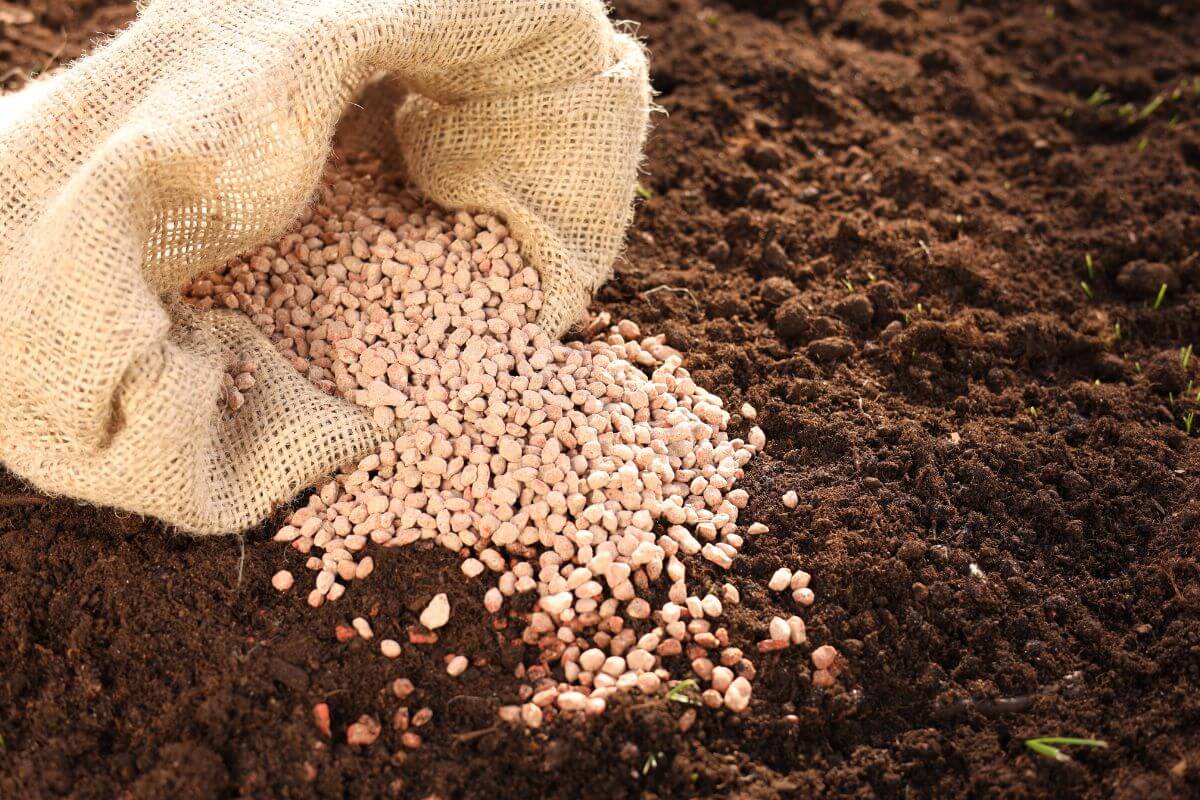
Granule fertilizers are a great slow-release option for bonsai trees. They release nutrients over several months, providing steady nourishment.
You don’t need to water them separately, as they will remain effective with regular watering of the plant. Simply place the granules around the tree’s base in the soil bed. They’re easy to use, clean, and hassle-free.
- Read more: How Often Do You Water Bonsais?
Follow these steps when fertilizing using granule fertilizers:
- Choose an appropriate bonsai granule fertilizer, organic or inorganic.
- Measure the granules according to package instructions.
- Sprinkle granules evenly on the soil surface, avoiding the trunk.
- Water thoroughly after applying granules to dissolve and release nutrients.
- Reapply every 4-6 weeks during the growing season. Adjust based on the tree’s response.
2. Bonsai Fertilizer Pellets
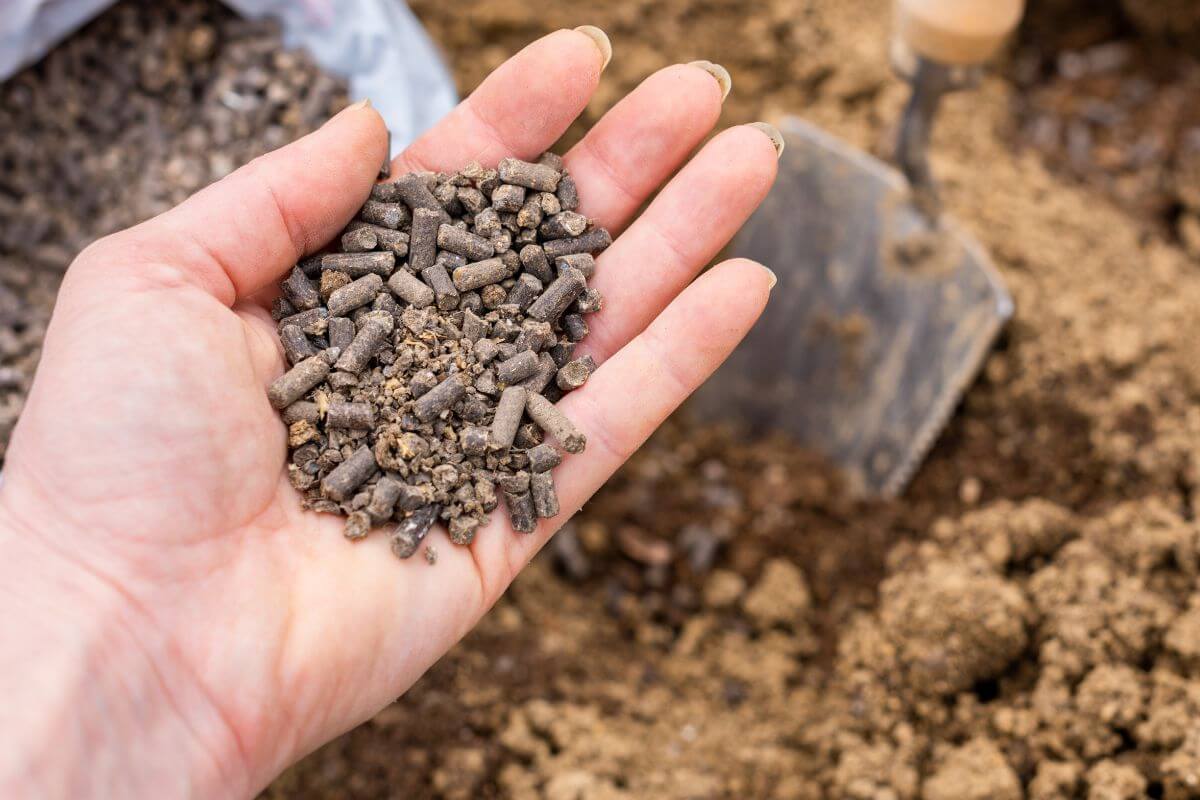
Fertilizer pellets are another slow-release option that’s very easy to use, especially if you have multiple bonsai trees.
These pre-measured pellets are compact and simple to store. They offer a lower risk of root burn compared to liquid fertilizers.
Pellets also help strengthen your bonsai’s resistance to pests and diseases, making them a great choice for healthy growth.
Fertilizing your bonsais using pellets? Follow these steps:
- Select slow-release bonsai fertilizer pellets.
- Use about one teaspoon of pellets per four inches of pot length.
- Scatter pellets evenly around the pot, avoiding the tree’s base.
- Press pellets lightly into the soil.
- Water thoroughly after applying pellets to start the nutrient release.
- Reapply every 4-6 weeks during the growing season.
3. Liquid Bonsai Fertilizer
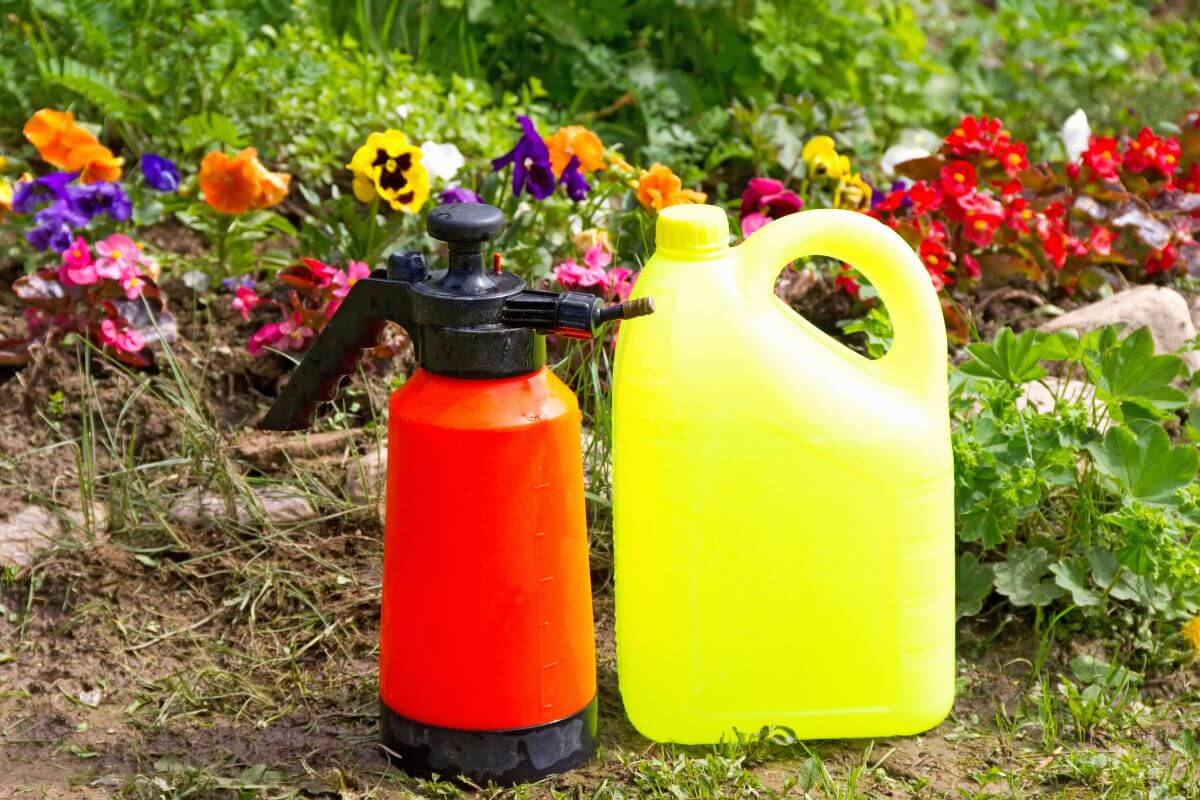
Liquid fertilizers are often more cost-effective and deliver nutrients quickly to the roots. They maintain pH levels in the soil while feeding the tree.
However, it’s important to use them carefully to avoid overfeeding and potential root burn.
You’ll need to stick to a regular schedule when using liquid fertilizers, as they require more frequent applications.
If you’re using liquid fertilizers on bonsais, follow these directions:
- Choose a balanced liquid fertilizer made for bonsai trees.
- Dilute the fertilizer according to the instructions, mixing it with water.
- Apply every 10-14 days during the growing season.
- Pour the diluted fertilizer over the soil and leaves.
- Ensure the soil is moist before application to avoid root burn.
- Water thoroughly after application to distribute micronutrients evenly.
- If excessive growth or yellowing leaves occur, reduce frequency or concentration.
When to Fertilize Bonsai Trees
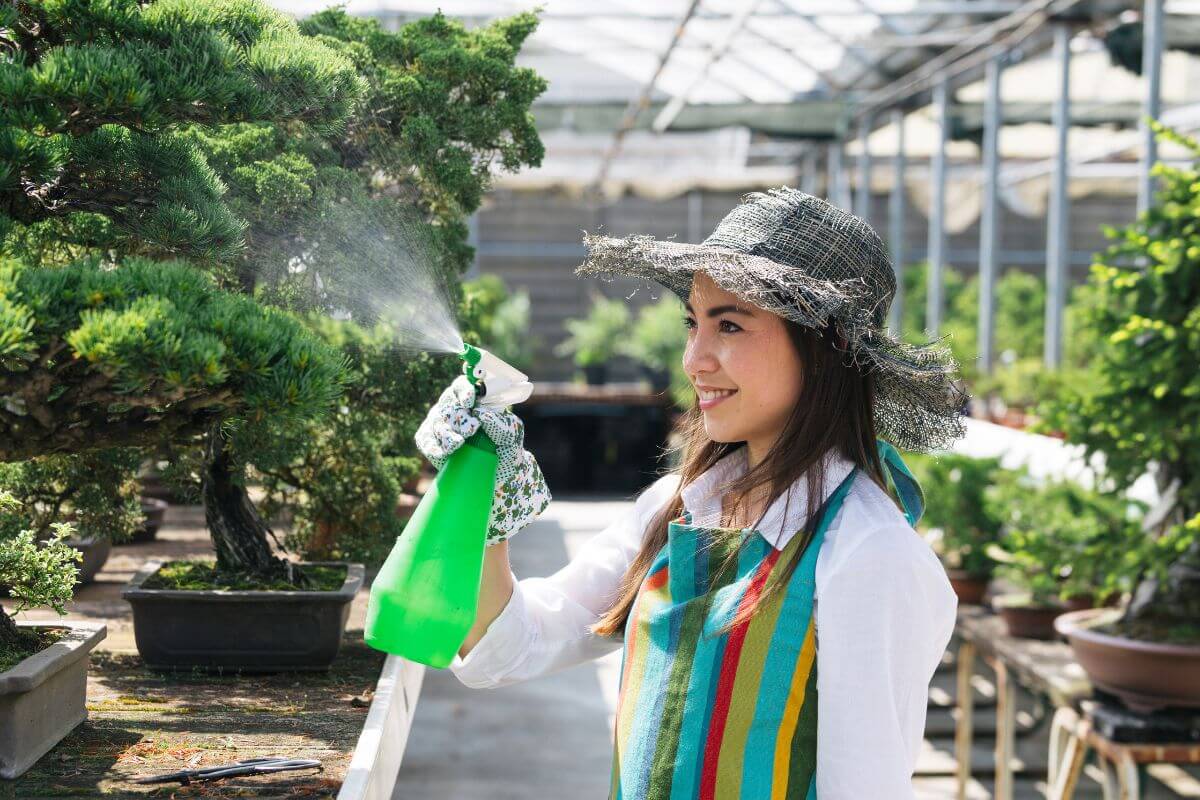
For bonsais, regular feeding is vital for health. The frequency of feeding will depend on the season. Bonsais need to be fertilized from the beginning of spring and the growing season through to autumn.
A few species will require occasional feedings even during the non-growing season during the winter months. Younger Bonsai will feed moderately for healthy root growth and then switch to light feeding at maturity.
- Learn more: Can Bonsai Survive Winter?
Younger trees must be fertilized during the entire growing season, meaning from early spring through mid-autumn. Mature Bonsai require fewer nutrient feedings and can be fertilized based on the stage of growth, the season, and the tree’s state of health.
The table below shows the ideal fertilization schedules for the various types of bonsai:
| Bonsai Type | Fertilization Schedule |
|---|---|
| Tropical and Subtropical | Fertilize year-round. Use a balanced liquid fertilizer every 1-2 weeks in spring to fall. Switch to monthly in winter. |
| Deciduous Trees | Start in early to late spring with a balanced fertilizer every 2-4 weeks. Reduce in late summer and stop in fall. |
| Conifer Trees | Fertilize from early spring to mid-fall with a balanced fertilizer every 2-4 weeks. Switch to a lower nitrogen fertilizer in late summer to early fall. |
Tip: As you water your bonsai tree in the non-growing season, you can add a gentile liquid fertilizer that has an NPK ratio of 3-3-3 to the water.
What Happens When You Overfeed Bonsai Trees?
Overfeeding your Bonsai can damage the plant roots. Symptoms to be on the lookout for include:
- Yellowing or browning leaves, especially at the tips and edges
- Wilting or drooping leaves and branches
- Stunted or slow growth
- White crust on the soil surface
- Leaf drop, particularly older leaves
- Weak, spindly new growth
If you have overfed your bonsai, it may die. Here are the steps to revive and try to keep your sick bonsai tree alive:
- Immediately halt all fertilization. Wait until the tree shows signs of recovery before resuming.
- Water the tree deeply from time to time to remove excess salts and nutrients from the soil.
- If you can, repot the tree with fresh bonsai soil. Remove as much of the old soil as possible without damaging the roots and use a clean bonsai pot.
- Cut back any dead or severely damaged leaves and branches.
- Place the tree in a spot with indirect light and protect it from harsh conditions while it recovers.
- Allow the soil to dry slightly between waterings. Avoid overwatering.
- Keep a close eye on the tree for new growth and signs of improvement. Recovery may take several weeks or months.
- Once new growth appears, start reapplying fertilizer at half the usual strength and frequency.
- Going forward, use less fertilizer and apply it less frequently to prevent overfeeding.
Bonsai Fertilizer Final Thoughts
Choosing the right fertilizer for your bonsai tree can help it thrive. There are two main types: liquid fertilizers, which provide a quick nutrient boost, and pellet fertilizers, which release nutrients slowly over time. It’s like choosing between a fast snack and a meal that keeps you full for longer.
When deciding which one to use, think about a few key things. The type of bonsai you have, how old it is, and how much time you can spend on it all matter. This choice will help make sure your bonsai gets the right care it needs to grow strong and healthy.
Learn more about bonsai trees with these articles:








